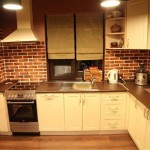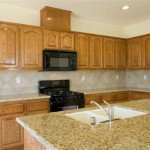Creamy White Paint Color for Kitchen Cabinets: A Comprehensive Guide
The kitchen stands as a focal point within any home, often serving as a hub for culinary creativity and social interaction. The aesthetic appeal of the kitchen significantly influences the overall ambiance of the house. Kitchen cabinets, as substantial visual elements, play a critical role in defining the kitchen's style. Among the various color options available for kitchen cabinets, creamy white consistently ranks as a popular choice, prized for its versatility, timelessness, and ability to create a warm and inviting atmosphere.
This article delves into the nuances of using creamy white paint colors for kitchen cabinets. It explores the characteristics of this color family, its advantages, factors to consider when selecting the right shade, and complementary design elements that enhance the overall aesthetic.
Understanding the Appeal of Creamy White
Creamy white is not simply a single color but rather encompasses a range of off-white shades that possess warmer undertones compared to stark, bright whites. These undertones can lean towards yellow, beige, or even subtle hints of gray, contributing to the "creamy" effect. This warmth distinguishes creamy white from cooler, more clinical white tones, making it a more appealing and inviting option for many homeowners.
The appeal of creamy white lies in its ability to create a sense of comfort and familiarity. It evokes feelings of nostalgia and tradition, lending a classic and timeless quality to the kitchen. Furthermore, its neutral nature allows it to blend seamlessly with various design styles, from traditional and farmhouse to transitional and even some modern interpretations. This adaptability is a key reason for its enduring popularity.
Creamy white cabinets offer a soft, diffused light reflection compared to brighter whites, which can sometimes feel harsh or sterile. This softer reflection helps to create a more relaxing and welcoming environment, especially in kitchens that receive ample natural light. The subtle warmth of the color also helps to minimize the appearance of imperfections and minor wear and tear, making it a practical choice for high-traffic areas.
Advantages of Choosing Creamy White for Kitchen Cabinets
Selecting creamy white for kitchen cabinets offers several distinct advantages that contribute to its enduring popularity among homeowners and designers alike.
Versatility: Creamy white's inherent neutrality renders it incredibly versatile. It complements a wide range of countertop materials, from granite and quartz to butcher block and concrete. It also pairs well with various backsplash options, including subway tiles, natural stone, and patterned ceramics. This flexibility simplifies the design process and allows for greater freedom in selecting other kitchen elements.
Timelessness: Unlike trendy colors that may quickly fall out of favor, creamy white possesses a timeless quality that ensures its continued relevance for years to come. It transcends fleeting trends and maintains a classic appeal that will not look dated easily. This is a significant advantage for homeowners seeking a long-term investment in their kitchen's aesthetic.
Warmth and Inviting Ambiance: As previously noted, creamy white's warm undertones create a welcoming and comfortable atmosphere. This is especially important in the kitchen, where people often gather for meals and social interaction. The subtle warmth helps to create a more inviting space, making it a more enjoyable place to spend time.
Enhancement of Natural Light: While not as reflective as brighter whites, creamy white still effectively reflects natural light, helping to brighten the kitchen and make it feel more spacious. This is particularly beneficial in smaller kitchens or kitchens with limited natural light. The soft reflection minimizes harsh shadows and creates a more even and balanced illumination.
Concealment of Imperfections: The subtle variations in tone within creamy white paint colors can help to camouflage minor imperfections on cabinet surfaces, such as scratches, dents, or uneven textures. This makes it a more forgiving choice than stark white, which tends to highlight any flaws.
Increased Home Value: A well-designed kitchen with classic elements, such as creamy white cabinets, can significantly increase a home's value. Potential buyers often appreciate the clean, updated look and the versatility of the space, making it a selling point.
Key Considerations When Selecting a Creamy White Shade
While creamy white offers numerous benefits, selecting the right shade is crucial to achieving the desired aesthetic. Several factors should be taken into consideration to ensure that the chosen shade complements the kitchen's overall design and existing elements.
Undertones: Creamy white paints come in a variety of undertones, including yellow, beige, and gray. It is essential to carefully consider these undertones and how they will interact with other colors in the kitchen. For example, a creamy white with yellow undertones may complement warm-toned countertops and backsplashes, while a creamy white with gray undertones may pair better with cooler-toned elements.
Lighting: The kitchen's lighting conditions significantly impact how a paint color appears. Natural light tends to enhance the warmth of creamy white, while artificial light can sometimes alter its appearance. It is recommended to test paint samples in the kitchen under different lighting conditions before making a final decision. Consider both daytime and nighttime lighting to get a comprehensive understanding of how the color will look throughout the day.
Existing Elements: The color of the countertops, backsplash, flooring, and appliances should all be taken into account when selecting a creamy white shade. The goal is to create a cohesive and harmonious color scheme. For example, if the countertops have warm tones, a creamy white with yellow undertones may be a good choice. If the backsplash is primarily cool-toned, a creamy white with gray undertones may be more suitable.
Sheen: The paint's sheen, or level of gloss, also impacts its appearance and durability. For kitchen cabinets, a satin or semi-gloss sheen is generally recommended. These sheens offer a good balance between durability, cleanability, and light reflection. Higher gloss sheens are more durable and easier to clean but can also highlight imperfections. Matte sheens offer a softer look but are less durable and harder to clean.
Cabinet Style: The style of the kitchen cabinets can influence the choice of creamy white shade. For example, a more traditional kitchen may benefit from a warmer, more traditional creamy white, while a transitional kitchen may pair well with a slightly cooler, more contemporary creamy white. Consider the overall design aesthetic of the kitchen and select a shade that complements the cabinet style.
Testing Samples: It is always advisable to test paint samples in the kitchen before committing to a particular shade. Paint a large sample area on a piece of cardboard or directly on the cabinet doors (in an inconspicuous area) and observe it under different lighting conditions and at different times of the day. This will provide a more accurate representation of how the color will look in the actual kitchen environment.
Complementary Design Elements to Enhance Creamy White Cabinets
While creamy white cabinets serve as a versatile foundation, incorporating carefully selected design elements can further enhance the kitchen's overall aesthetic and create a more cohesive and visually appealing space.
Hardware: The choice of cabinet hardware can significantly impact the style of the kitchen. For a traditional look, consider brass or oil-rubbed bronze hardware. For a more contemporary look, consider stainless steel or brushed nickel hardware. The hardware should complement the cabinet style and the overall color scheme of the kitchen. Consider the finish and style of the faucets and other fixtures in the kitchen to create a coordinated look.
Countertops: Creamy white cabinets pair well with a wide range of countertop materials and colors. Granite, quartz, butcher block, and concrete are all excellent choices. When selecting a countertop color, consider the undertones of the creamy white cabinets and choose a color that complements them. For example, a creamy white with yellow undertones may pair well with a warm-toned granite or quartz countertop.
Backsplash: The backsplash provides an opportunity to add visual interest and personality to the kitchen. Subway tiles, natural stone, and patterned ceramics are all popular choices. Consider the color and texture of the countertops when selecting a backsplash. A simple subway tile backsplash can create a classic and timeless look, while a patterned ceramic backsplash can add a touch of whimsy and personality.
Lighting Fixtures: The choice of lighting fixtures can significantly impact the ambiance of the kitchen. Consider incorporating a combination of ambient, task, and accent lighting to create a well-lit and visually appealing space. Pendant lights over the island or breakfast bar can add a touch of elegance, while under-cabinet lighting can provide task lighting for food preparation. The finish of the lighting fixtures should complement the cabinet hardware and other metal elements in the kitchen.
Wall Color: The wall color should complement the creamy white cabinets and other elements in the kitchen. Neutral colors, such as grays, beiges, and light blues, are often good choices. Avoid colors that clash with the creamy white or overpower the other elements in the kitchen. Consider the amount of natural light in the kitchen when selecting a wall color. Darker colors can make a small kitchen feel even smaller, while lighter colors can help to brighten the space.
Accessories: Accessories, such as rugs, curtains, and artwork, can add personality and warmth to the kitchen. Choose accessories that complement the overall color scheme and style of the kitchen. A colorful rug can add a pop of color to a neutral kitchen, while artwork can add visual interest and personality. Avoid cluttering the countertops with too many accessories, as this can make the kitchen feel cramped and disorganized.
By carefully considering these complementary design elements, homeowners can create a kitchen that is both beautiful and functional, with creamy white cabinets serving as a timeless and versatile foundation.

Top 10 White Paint Colours For Kitchen Cabinets Pamela Lynn

Our Favorite White Kitchen Cabinet Paint Colors Christopher Scott Cabinetry

Top 10 White Paint Colours For Kitchen Cabinets Pamela Lynn

Our Favorite White Kitchen Cabinet Paint Colors Christopher Scott Cabinetry

The Best White Paint For Kitchen Cabinets 2024 Sherwin Williams Color Guide

Top 10 White Paint Colours For Kitchen Cabinets Pamela Lynn

The Best Colors For Off White Kitchen Cabinets Painted By Kayla Payne

Best Sherwin Williams White For Cabinets

Benjamin Moore Creamy White On Cabinet Home Bunch Interior Design Ideas

Top 10 White Paint Colours For Kitchen Cabinets Pamela Lynn
Related Posts








